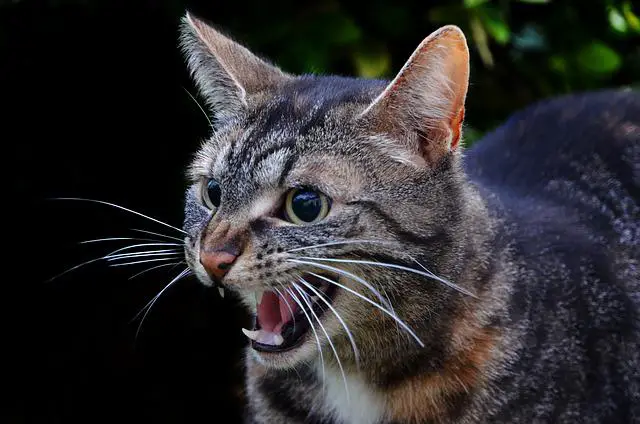
Behavior of the dominant cat, certainly not like a nice animal, but not so terrible. And above all, immediately recognizable and therefore avoidable. Or, stubborn as cats are, let’s say that the behavior of the dominant cat can be softened so that from a little tyrant of the house it becomes just a bit of a pain in the ass.
Behavior of the dominant cat: attitudes
We understand from the first months if ours has the behavior of the dominant cat and it is possible, to educate them promptly to the rules and to respect for coexistence. Not for wanting to mark our supremacy as bipeds over quadrupeds, but because the behavior of the dominant cat can cause problems in the presence of other animals, cats or dogs or other pets, or if there are children in the house.
The behavior of the dominant cat manifests itself above all in non-sterilized specimens, in non-neutered males, but it can also be caused by some of our ways of pigs. Yes, without our knowledge we often make gestures that let the cat think of being dominant. Obviously then our cat will assume the behavior of the dominant cat: how to miss the opportunity?
Here are some examples of what can induce the behavior of the dominant cat: giving more attention to one animal than the other, perhaps if it is the latest arrival, or allowing a small cat to nibble or scratch hands or feet. It is also important, at the moment of the meal, to serve everyone at the same time, checking that there is no bully on duty.
Behavior of the dominant cat: what to do
If our adult cat shows off the classic behavior of the dominant cat with other animals, or defiantly – attacks, blows, scratches, bites – let’s take him away from others, isolated, face to face with us. At that point, we can firmly explain to the cat that “” No, it’s not done. ” The first time he will think ” yes, okay, I do what I want”, like a feline bully, but after three or four times he will understand that it is better not to have the behavior of the dominant cat.
The behavior of the dominant cat to mark the territory
When you notice that our animal has the behavior of the dominant cat, let’s expect it to also show particular attitudes in wanting to mark the territory.
Behavior in cats
There is no “cat behavior” in general, each cat has its own and it depends on its individuality but also on the breed and the environment. However, there are feline “catchphrases” that can help us understand what type our cat is. It is important, not only to anticipate the moves of the sly, but also to set up a good coexistence.
The behavior of domestic cats
Domestic cats, if they do not flaunt the behavior of the dominant cat, have a series of classic gestures that unmask them in their thoughts. Of course, do not expect the cat to become an open book, he is still a feline with all the malice of his panther colleague, but we can keep some tips in mind.
For example, rubbing against people’s legs for the cat is a welcome ritual but at the same time, it takes advantage of it to smell and to brand the man with his own, so he is more at ease with the owners. The gesture of kneading the womb with the front legs is an indelible legacy of childhood: you remember the mother cat when she was ready to feed, she becomes a puppy again and does what she did in her time. Other than dominant cat behavior!
If our friend wags his tail, just think that he is angry, let’s not attribute emotions to them that are not his. It moves her like this when it wants to do two things at the same time, but one excludes the other. When it blows, it is because it knows it is in a dangerous situation and imitates an angry snake to give his enemy the impression of being dangerous and poisonous. Always with the enemy he arches his back and straightens his hair: he feels threatened. He also gets sideways with respect to the other to look bigger and scary.
A classic habit of the domestic cat is getting claws on sofas or armchairs. Okay that is to sharpen his nails but not only: he takes the opportunity to train to unsheath and withdraw his nails as to capture prey, to fight or climb. And if you have wondered why many gstti have the fixation to stay high, here is revealed: it is not only to keep the territory and any prey under control, but also to rest in peace and attract pampering and attention.
The behavior of the cat after castration
The behavior of the cat after neutering does not become the behavior of the dominant cat, or rather, if it was before, it remains, otherwise no post castration metamorphosis. After the operation we will find changes in behavior only for what concerns the sexual sphere and surroundings. Our cat will no longer try to mate desperately, it will meow the right one, it will stay closer to home.
And we do not begin, two days after the surgery, to mumble saying that he is unfriendly, grumpy or that he has the behavior of the dominant cat. After the operation we are all a bit in the air and often want to be left in peace for a while. The cat wants to readjust to the smell of home and family rhythms, after castration it seems to me more than legitimate.







